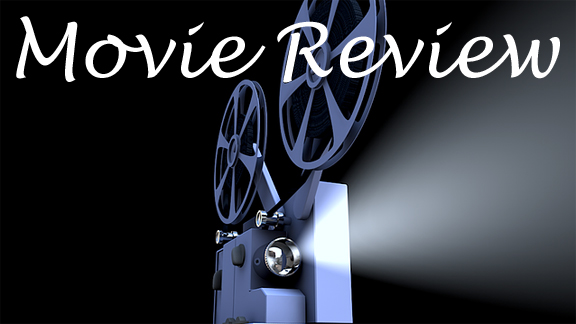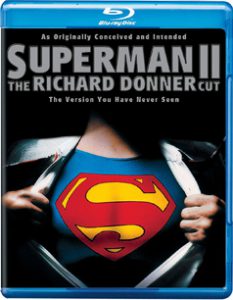“Man of Steel” (2013) ends with Superman ravaging Metropolis in order to defeat General Zod, and that destruction becomes a central issue of “Batman v Superman” (2016). The filmmakers had time in between the films to learn that viewers were bothered by the collateral damage of Supes’ fight, and either added that theme to the sequel or knew they were justified in doing so. Things were different in the original “Superman” film saga.
For one thing, home video wasn’t quite here yet, and the internet was further away, so it wasn’t easy to get feedback. For another, “Superman” (1978) and “Superman II” (1981) were filmed simultaneously. To me, the biggest theme coming out of the first film is Superman’s (Christopher Reeve) loss of naiveté, when he sees the evil perpetrated by his arch-nemesis — at least in the comics — Lex Luthor (Gene Hackman). I thought it would be interesting for the sequel to dig into that, with the additional realization that Krypton – via General Zod (Terence Stamp) and his cohorts – can also produce evil people.
While those elements are loosely present in the sequel, this is more of a “part two” than a new story, and Superman hasn’t had time to absorb any lessons.

“Superman II: The Richard Donner Cut” (2006)
Directors: Richard Donner, Richard Lester
Writers: Joe Shuster, Jerry Siegel, Mario Puzo
Stars: Gene Hackman, Christopher Reeve, Marlon Brando
Closer to the original intent
“Superman II: The Richard Donner Cut” (2006) is more or less what the sequel was artistically intended to be, and it has now replaced the theatrical version as the canonical and more popular version (7.7 on IMDB compared to 6.8 for the theatrical cut, which was primarily directed by the studio’s replacement, Richard Lester). “The Donner Cut” is the version included on the nine-disc Blu-ray set of the five “Superman” and four Burton/Schumacher “Batman” films, and it’s the version I’m reviewing here.
Like a lot of serialized sagas (see also “Planet of the Apes”) before home video, Donner’s “Superman II” starts with a lengthy replay from the previous film, reminding us of Krypton’s banishment of Zod, Ursa (Sarah Douglas) and Non (Jack O’Halloran). In a supremely ironic coincidence, the missile Superman knocked into space hits their floating cell, releasing them, and they fly toward Earth. In a fun sequence, they first stop on the moon and murder the stunned members of a joint USA/USSR science team.
But the heart of “Superman II” — written by Mario Puzo, David Newman and Leslie Newman – is the relationship between Lois (Margot Kidder) and Clark/Superman, and I appreciate that it starts with Lois immediately figuring out they are the same person.
She draws glasses, a suit and a reporter’s hat over the photo of Superman in the paper. She’s so confident in her conclusion that she jumps out a Daily Planet skyscraper window so Clark will have to save her. Instead, we see the lengths he’ll go to preserve his secret: He zips to the ground and blows a gust of wind upward to guide her to a safe landing on an awning, then zips back upstairs.

That buys him some time, but later — in the movie’s best scene — Lois shoots Clark in their Niagara Falls hotel room, forcing him to stop the bullet. He says “What if I had been Clark Kent?” before she reveals there was no bullet — and he has now spilled the beans. (Interestingly, the scene comes from a screen test, as it was not officially filmed; however, it melds seamlessly on the Blu-ray and the performances are just fine.)
Exploring the secret
Later superhero sagas tend to be invested in the idea of secret identities and the notion that a superhero can’t live a normal life. A lot of times it makes perfect sense (“Buffy” and the “X-Men” films) because it’s established that the world isn’t ready for the knowledge. Other times it feels like movies are exercising the trope without thinking about it: Peter breaking up with Mary Jane in “Spider-Man” (2001) doesn’t make her safer, it just makes them both sad.
In “Superman II,” the theme plays better than in “Spider-Man,” although it’s still shaky.
In a plot that would later be played more tidily in the “Angel” Season 1 episode “I Will Remember You,” Superman and Lois have a passionate time at the Fortress of Solitude, but then the cyberspace Jor-El (Marlon Brando) curses him by sapping his powers.
He eventually gets them back and wipes Lois’ memory by reversing the rotation of the Earth. (Incidentally, the “Superman” saga is rare example of the storytellers playing fair with time travel. A lot of sagas use time travel once, thus raising questions later in the narrative of: “Well, why didn’t they just use time travel again?” Here, Superman does indeed remember it’s an option.)
It’s fair enough that Jor-El believes his son can’t have a normal life and also fulfill his superhero duties; he’s entitled to his opinion, and indeed, he’s probably right. However, why does he deliberately sap Superman of his powers in order to teach that lesson (and later restore those powers once the lesson has been learned)? Krypton is a less free, more structured culture than Earth (“MoS” tells us everyone has pre-determined jobs in society), so I have to guess it’s a cultural thing. But it might’ve been nice to see how Superman handled the balancing act without Jor-El giving him an artificial handicap.
Erasing her knowledge
At the film’s end, Superman chooses to erase Lois’ knowledge that Clark and Superman are the same person. This won’t keep her out of danger: Remember, she and Superman still care about each other, so villains can still exploit that, like Lex and Zod do at the end of “Superman II.”
It’s also worth noting here that Lois has more agency – and seems slightly more competent at her job — in the sequel. In addition to pursuing Superman’s secret, she isn’t a withering flower in battle: She greets Ursa by punching her, and while that doesn’t go well the first time, it works better when Ursa is later sapped of her powers. The Kryptonian villains are too strong for any human, but in general, Lois can hold her own.
Ironically, “Superman II” has the proper ending for the wrong reason. As in “Man of Steel,” Metropolis gets torn up by the battle between Superman and Zod. So by erasing that event, Superman reverses all that loss of life and property damage, while also securing his popularity among the masses.
Then again, perhaps Superman’s public image wouldn’t have been on the line in 1981 as it was in 2013; maybe people cut their superheroes some slack back then. When it appears Superman is dead, crushed between two large vehicles, the citizenry rises up in the streets against their oppressive rulers. Of course, they don’t make the slightest dent, and the Kryptonians are actually merciful in creating a wind gust rather than laser-beaming the humans, but the idea that they try is cool. And it buys Superman time to recover.
Supes’ breaking point
While this isn’t the “loss of innocence” film for Superman that it might’ve been, there is one very satisfying thread where our hero decides to not take any more crap. A roadside diner bully beats up the non-super Supes, which makes him realize he needs to get his power back.
After the Big Bads are dispatched, Superman (looking like the mild-mannered Clark, complete with glasses that he pushes up his nose) goes back to the diner and challenges the bully. The fight starts with the always-satisfying moment of the bully being stunned that his punch to the gut has connected with solid steel.
It’s cathartic for Superman and entertaining for the audience. Superman doesn’t kill, but he can sure dole out some judicious punishment.

